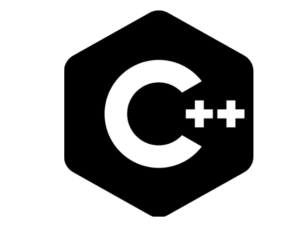Structure of C++ Program: When you open your first C++ compiler when you write for the first time any instruction, you are not simply writing a program for a machine; it is an initiation into a universal skeleton, of which thousands have remained unchanged for decades. The structure of a C++ program is like a grammar rule for the English language: once you understand it, it contains everything from simple greets on the screen to the world’s most sophisticated applications that power game engines, operating systems, and banking systems.

Basic System of C++
Most beginners tend to underestimate the basic structure of a C++ program because it looks very simple and misleading in nature. A few lines, some brackets, and some odd symbols are all that is necessary to print “Hello World.” But in reality, this groundwork is exactly what enables professionals to create systems as large as Microsoft Windows or 3D modeling tools. If you do not master the structure of a C++ program, then you are building a skyscraper without a blueprint.
This guide will solve your doubts in this area of discussion and will not just answer technical questions such as what the structure of C++ programming is and how to structure a C++ application. It will cover things like practical coding habits, common mistakes, and why even today the majority of the professionals rely on these timeless frameworks.
What is the Structure of C++ Program?
The arrangement of elements in a program predefined for making that program valid and executable in C++ will be its structure. In human terms, it can be thought of as a recipe to make a particular dish. It does not matter how exotic your ingredients are; without preparation, cooking, seasoning, and serving in the correct order, one does not create a proper meal. Thus, C++ insists that your code be in a certain order-headers first, then namespace, main function, and so on.
A minimal basic structure of a C++ program includes five core elements:
- Preprocessor directives – These tell the compiler what external resources to load, like libraries.
- Namespace declaration – This avoids naming conflicts when your code uses predefined classes and functions.
- Main function – The single entry point of your program.
- Statements inside main – Instructions such as input, output, calculations, or loops.
- Return statement – Ends the program and signals its success.
It does not change whether you are writing two lines in one or making 20,000 lines of enterprise application. It’s this that constitutes structure so historically reliable and durable.
Basic Structure of a C++ Program with Example
Let’s break down the most famous example in programming history:
#include <iostream> // Preprocessor directive
using namespace std; // Namespace declaration
int main() { // Main function
cout << “Hello, World!”; // Output statement
return 0; // End of program
}
This little snippet embodies the entire basic structure of a C++ program. Each line has its own:
- The #include <iostream> line loads the Input/Output stream library so that commands like cout and cin can function. Without it, your program is like a car without fuel.
- The line using namespace std; saves you from constantly writing std::cout. It keeps code readable, especially in larger projects.
- The int main() function is the program’s beating heart. Every C++ program starts here. No matter how many files or classes you create, execution begins with main().
- The cout statement tells the program to display text on the screen, connecting your logic with the user’s view.
- The return 0; line indicates that everything ran successfully. It’s like signing off a letter with “Yours faithfully.”
This structure of C++ with example may look basic, but it is the gateway to every powerful thing that you will ever build in this language.

Evolution of Structure of C++ Program (Timeline)
C++ has had a wonderful growth from the time it was discovered in the 1980s, but the simple structure of a C++ program remained surprisingly unchanged.
Year Milestone Effect on Structure
| Year | Milestone | Impact on Structure |
| 1983 | Birth of C++ | Introduced classes but retained C-style program skeleton |
| 1990s | Standard Template Library (STL) | Expanded use of headers in structure |
| 2011 | C++11 introduced auto, lambdas | Programs got more compact, but structure stayed same |
| 2020 | C++20 modules, coroutines | Changed large-scale structuring, not main skeleton |
| 2025 | C++23 features | More efficiency, same program blueprint |
No matter how avant-garde the features may be, the structure of C++ program did not bend an inch. This shows its universal reliability.

Key Components of the Structure of C++ Program
-
Preprocessor Directives
Preprocessor directives are the instruction runs before the actual compilation. For example:
#include <iostream>
#include <math.h>
They work like the tools you take to your shop before you start with work. Without them, your basic structure of a C++ program is incomplete. They are forgotten a lot by beginners and result in compiler errors.
-
Namespace Declaration
Namespaces prevent clashes when two entities share the same name. Using namespace std; is found in the structure of C++ program. But professionals sometimes would avoid this for very big projects just to keep naming precise.
-
The Main Function
As for the main door, so for an int main (): the house has the main door, and every C++ program has int main(). This part of the structure of C++ program is non-negotiable.
-
Input/Output Statements
These are what make programs live. cin takes input, while cout displays output. They convert the basic structure of a C++ program from static to dynamic.
-
Return Statement
Even though optional in modern compilers, having return 0; makes your structure of C++ program look professional. Very clearly, it tells the operating system that the program ended successfully.
How to Structure a C++ Application?
Once the program grows past “Hello World,” it is time for you to sit back and think of how to structure a C++ application for clarity and scalability. All your code written in one huge main function is pure chaos. Professionals avoid this by:
- Using functions to break logic into smaller and reusable units.
- Organizing code into classes to comply with object-oriented standards.
- Separating files into headers (.h) and source files (.cpp).
For example, in a calculator project instead of somehow completing all operation inside main(), you create a header file mathutils.h with declarations and a source file mathutils.cpp with actual definitions of functions. Hence, a neat structure for a C++ program makes debugging and working in teams much easier.
What is a Structure Type in C++?
Well, other than program skeletons, the word “structure” in C++ also means a user-defined data type. A structure type in C++ enables you to group together random data variables under one name.
struct Student {
int id;
string name;
float marks;
};
That way instead of managing three different variables for a student, you decide to combine the three in one. Structures in C++ remember the old days of becoming classes but has an equally relevant place in programming today.
Why Are Structures Used in C++?
Now, why do we have structures in C++? Some reasons are:
- They organize your code by grouping related data.
- They represent real-world entities, such as employees, cars, and books.
- They lay a foundation for object-oriented programming.
- They make complex data handling easier.
Even in the field, when they don’t need the maximum complexity of classes, some practical applications of structures do exist. For instance, in lightweight data models or APIs, structures are just a beauty with no overhead.
Common Mistakes in Structure of C++ Program
Forgetting a header file – Without <iostream>, your I/O won’t work.
Skipping semicolons – A missing semicolon can break the entire basic structure of a C++ program.
Misusing namespaces – Overusing using namespace std; in very large projects can cause conflicts.
Overcrowded main() – No one wants to see a world where everything is crammed inside main().
Catching these mistakes early goes a long way to making the structure of C++ with example absolutely second nature.
Practical Example: Structured Calculator Program
Here’s a real example of howone can structure a C++ application:
#include <iostream>
using namespace std;
int add(int a, int b) { return a + b; }
int subtract(int a, int b) { return a – b; }
int main() {
int x, y;
cout << “Enter two numbers: “;
cin >> x >> y;
cout << “Sum = ” << add(x, y) << endl;
cout << “Difference = “<< subtract(x, y);
return 0;
}
Notice how logic is separated into functions. This clean structure of C++ program mirrors how professionals organize larger applications.
Interview Insights: Structure of C++ Program
Q: What is the C++ program structure?
A predefined skeleton consisting of headers, namespace, main function, statements, and return.
Q: How to structure a C++ application for large projects?
Divide the code into files, use classes and functions, and follow modular programming.
Q: What is a structure type in C++?
User-defined type that groups variables of different data types into one unit.
Q: Why are structures used in C++?
To organize data, represent real-life entities, and be prepared for OOP concepts.
Also Read:
- How to Write First C++ Program, Example Hello World
- C++ Game Development: How Is C++ Used in Game Development?
- History Of C++ | Timeline (+Infographic), List Of Versions, & More
- The Effective Guide on Encapsulation in C++ with a Real-Life Example
Learn C++ with PW Skills
Master DSA and C++ with PW Skills
Understanding C++ program structure is an entry point, but coding is perfected only through problem-solving. PW Skills offers a DSA in C++ course designed for students and professionals alike. With hands-on coding classes, real-world projects, and expert mentorship, this course narrows the gap between theory and industry skill set. Start small with programming structure, move ahead to mastering algorithms that crack interviews and push forward your career.
The Everlasting Blueprint
From the first “Hello World” to matured enterprise applications, C++ program structure acts as an everlasting skeleton. Either you are a beginner, asking “What is the structure of C++ programming?” or you are a kind of professional, wondering, “How to structure a C++ application?” either way, the answer always starts from this—the same old outline.
Know it well, as this skeleton is not just syntax. It embodies organization, discipline, and clarity. That once you have this basic structure of a C++ program, the world of problem-solving, algorithms, and software development opens to you.
Unlikely. Features evolve, but the Skeleton has been stable for 40+ years. Yes, structures are lighter and generally used in APIs or performance-sensitive systems. No, main() is mandatory as the entry point. Write small interactive programs (like calculators or quiz apps) and slowly modularize them.Structure of C++ Program FAQs
Can the structure of a C++ program change in the future?
Is structure type in C++ still useful if we have classes?
Can we write a program in C++ without main()?
What’s the easiest way to practice the basic structure of a C++ program?

